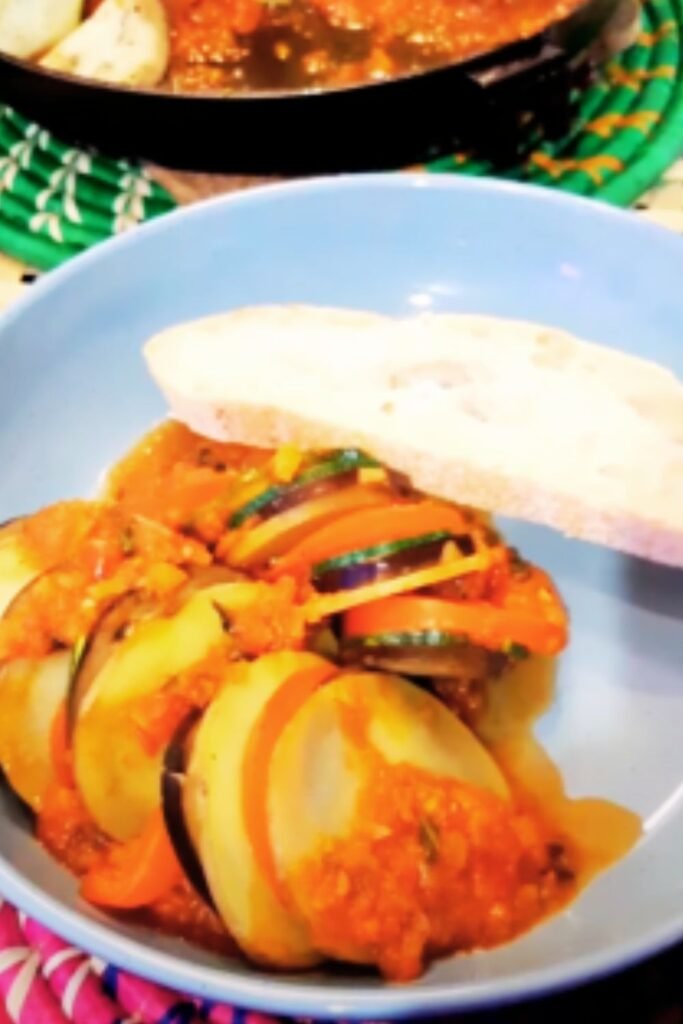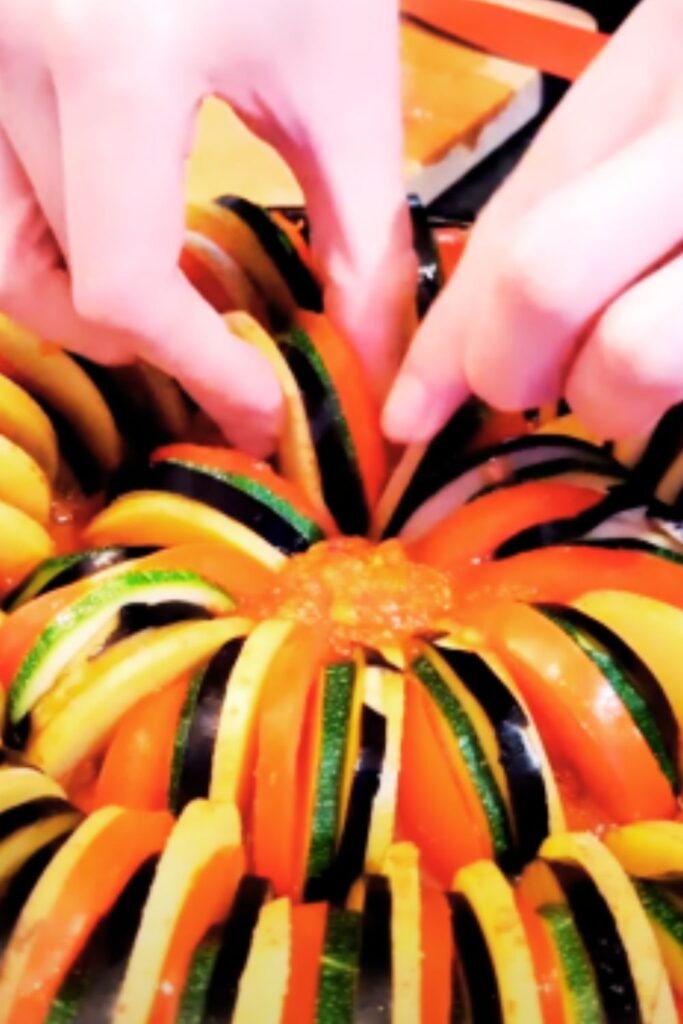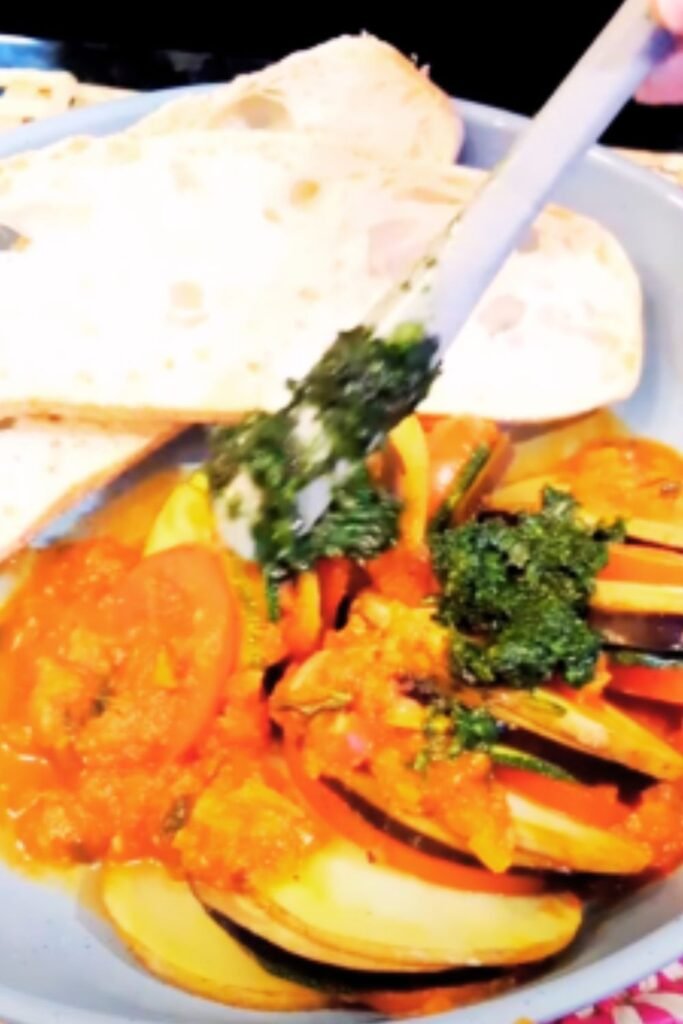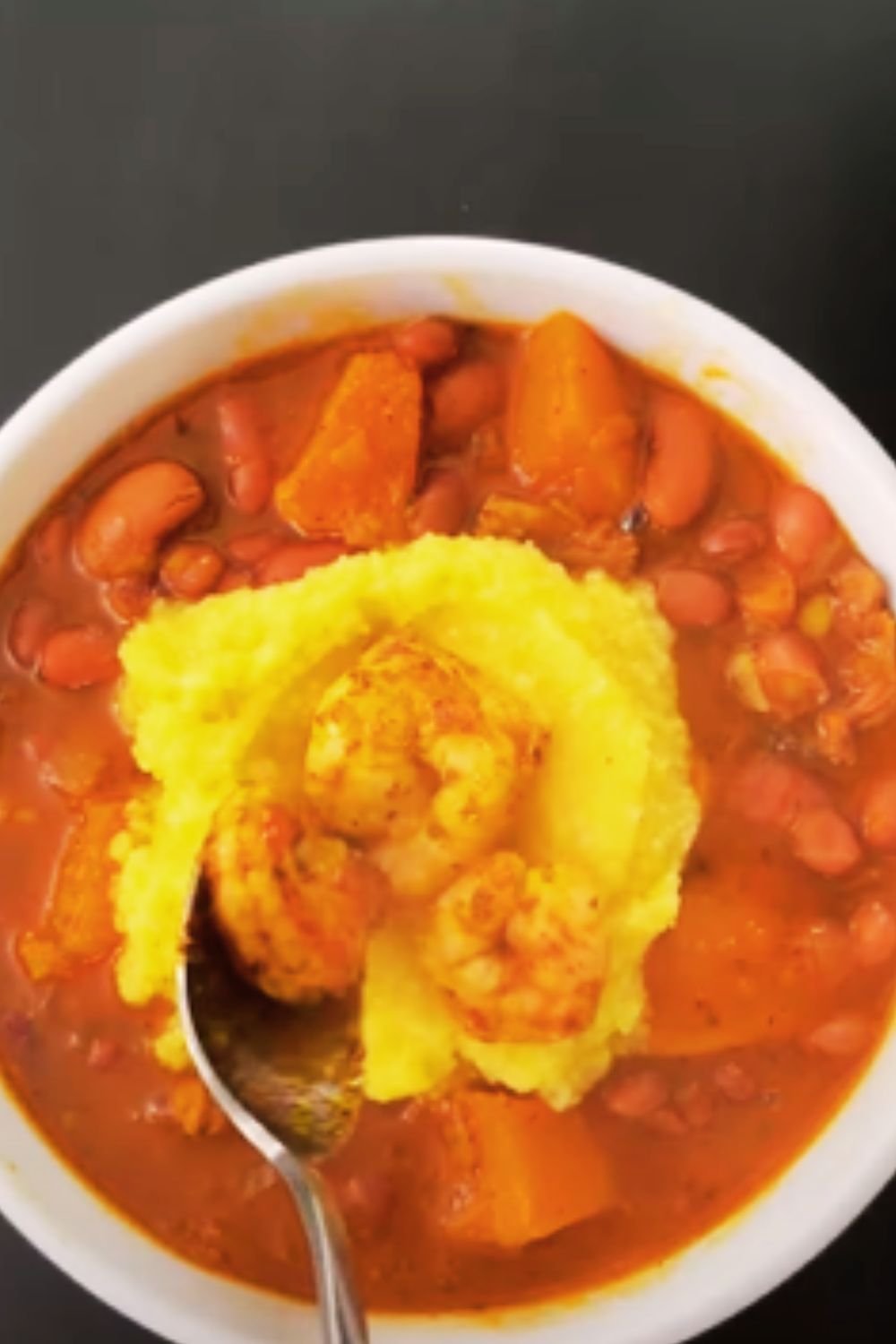Have you ever watched that famous animated movie where a rat makes a stunning French vegetable dish that wins over even the harshest food critic? Well, I’m here to share my take on that very same dish – ratatouille! Don’t worry, though; you won’t need a tiny chef hiding under your hat to create this delicious meal.
Ratatouille is a celebration of summer vegetables, a colorful medley that’s not only visually appealing but also packed with flavor and nutrients. What I love most about this dish is how it transforms simple, affordable ingredients into something truly special. As someone who values both health and budget-consciousness in my cooking, ratatouille has become one of my go-to recipes.
In this article, I’ll share my easy ratatouille recipe that anyone can make, regardless of cooking experience. You’ll discover how to prepare, cook, and serve this wonderful French classic, along with tips to make it your own. Let’s get started!
What Is Ratatouille?
Before we dive into the recipe, let’s understand what makes ratatouille so special. Originating from Provence in southern France, ratatouille (pronounced rat-a-too-ee) is a rustic vegetable stew traditionally made with eggplant, zucchini, bell peppers, tomatoes, onions, and herbs. The name comes from the French term “touiller,” which means to stir or toss food.
While traditional ratatouille involves cooking each vegetable separately before combining them, my version simplifies the process without sacrificing flavor. This makes it perfect for busy weeknights when you want something nutritious without spending hours in the kitchen.
Why You’ll Love This Recipe
- Budget-friendly: Uses seasonal vegetables that are often inexpensive
- Versatile: Can be served as a main dish, side dish, or even breakfast option
- Meal-prep friendly: Tastes even better the next day
- Naturally vegan and gluten-free: Perfect for various dietary needs
- Nutrient-packed: Full of vitamins, minerals, and antioxidants
- Customizable: Adaptable to whatever vegetables you have on hand
Ingredients You’ll Need
For this easy ratatouille recipe, I’ve streamlined the ingredients list to focus on essentials while maintaining authentic flavor:
| Ingredient | Amount | Notes |
|---|---|---|
| Eggplant | 1 medium (about 1 pound) | Look for firm, shiny skin |
| Zucchini | 2 medium | Green or yellow variety works |
| Bell peppers | 2 (red and yellow preferred) | For sweetness and color |
| Yellow onion | 1 large | Provides essential base flavor |
| Garlic | 4 cloves | Fresh is best for aromatics |
| Roma tomatoes | 4-5 (about 1 pound) | Or 1 can (28 oz) diced tomatoes |
| Tomato paste | 2 tablespoons | Adds richness and depth |
| Olive oil | 3 tablespoons | Extra virgin preferred |
| Fresh herbs | 2 sprigs rosemary, 4 sprigs thyme | Dried can substitute in a pinch |
| Bay leaf | 1 | Optional but recommended |
| Fresh basil | ¼ cup, chopped | For garnish |
| Salt and pepper | To taste | Start with 1 teaspoon salt |
| Red pepper flakes | ¼ teaspoon | Optional, for heat |
Equipment Needed
- Large skillet or Dutch oven (12-inch diameter is ideal)
- Sharp knife and cutting board
- Wooden spoon or heat-resistant spatula
- Measuring spoons
- Optional: mandoline for slicing vegetables evenly

Step-by-Step Instructions
Follow these simple steps to create a delicious ratatouille that will impress your family and friends:
1. Prepare Your Vegetables
First things first, prep work makes the cooking process much smoother:
- Dice the eggplant into ¾-inch cubes (no need to peel)
- Cut zucchini into ½-inch half-moons
- Dice bell peppers into ¾-inch pieces
- Finely dice the onion
- Mince garlic cloves
- Dice tomatoes into chunks (if using fresh)
Pro tip: For the best texture, cut all vegetables into similar-sized pieces so they cook evenly.
2. Salt the Eggplant (Optional but Recommended)
This extra step improves both texture and flavor:
- Place diced eggplant in a colander
- Sprinkle with 1 teaspoon salt and toss to coat
- Let sit for 15-30 minutes to draw out moisture
- Rinse briefly and pat dry with paper towels
While traditional, you can skip this step if you’re short on time. Modern eggplant varieties are less bitter than they once were.
3. Cook the Vegetables
Now, let’s get cooking:
- Heat 2 tablespoons olive oil in your large skillet or Dutch oven over medium heat
- Add onions and cook for 4-5 minutes until translucent
- Add garlic and cook for 30 seconds until fragrant
- Add bell peppers and cook for 3-4 minutes until starting to soften
- Add eggplant and remaining tablespoon of oil if needed, cook for 5 minutes, stirring occasionally
- Add zucchini and cook for another 3 minutes
Important: Don’t rush this process! Building flavors gradually is key to a delicious ratatouille.
4. Add Tomatoes and Seasonings
Now for the saucy part:
- Add diced tomatoes (or canned tomatoes) and tomato paste
- Stir in rosemary, thyme, bay leaf, salt, pepper, and red pepper flakes (if using)
- Bring to a simmer, then reduce heat to low
- Cover partially and cook for 20-25 minutes, stirring occasionally
5. Finish and Serve
The final touches make all the difference:
- Check vegetables for tenderness – they should be soft but not mushy
- Taste and adjust seasoning if needed
- Remove herb sprigs and bay leaf
- Stir in half the fresh basil
- Garnish with remaining basil before serving

Storage and Make-Ahead Tips
One of the wonderful things about ratatouille is that it often tastes better the next day, making it perfect for meal prep:
- Refrigeration: Store in an airtight container for up to 4 days.
- Freezing: Freeze in portion-sized containers for up to 3 months. Thaw overnight in the refrigerator.
- Reheating: Warm gently on the stovetop or microwave until heated through.
Serving Suggestions
Ratatouille is incredibly versatile. Here are my favorite ways to enjoy it:
- As a main dish with crusty bread for dipping
- Over cooked polenta or quinoa for a hearty meal
- Alongside grilled chicken or fish for extra protein
- Cold or room temperature as part of an antipasto platter
- With a fried or poached egg on top for breakfast
- Blended into a soup for cooler days
- As a filling for omelets or frittatas
- Tossed with pasta for a quick dinner
Nutritional Benefits
Ratatouille isn’t just delicious – it’s also incredibly good for you! Here’s a breakdown of the nutritional powerhouses in this dish:
| Vegetable | Key Nutrients | Health Benefits |
|---|---|---|
| Eggplant | Fiber, Potassium, Anthocyanins | Supports heart health, contains antioxidants |
| Zucchini | Vitamin C, Manganese, Lutein | Promotes eye health, supports immune system |
| Bell Peppers | Vitamins A, C, E, Folate | Strong antioxidant properties, immune support |
| Tomatoes | Lycopene, Potassium, Vitamins C & K | Reduces inflammation, supports heart health |
| Onions | Quercetin, Sulfur compounds | Anti-inflammatory, supports digestive health |
| Garlic | Allicin, Selenium | Immune-boosting, anti-microbial properties |
| Olive Oil | Monounsaturated fats, Vitamin E | Supports heart health, anti-inflammatory |
| Fresh Herbs | Various polyphenols | Antioxidant and anti-inflammatory properties |
A typical serving of ratatouille (about 1 cup) contains approximately:
- 120-150 calories
- 8-10g carbohydrates
- 3-4g protein
- 9-11g fat (mostly healthy monounsaturated from olive oil)
- 3-4g fiber
- Rich in vitamins A, C, K, B6, folate, and potassium
Variations and Substitutions
While the classic version is delicious, don’t be afraid to make this recipe your own:
Vegetable Substitutions
- No eggplant? Try using portobello mushrooms
- Out of zucchini? Yellow summer squash works perfectly
- Bell pepper alternatives? Fennel adds a nice anise flavor
Flavor Enhancements
- Add a splash of balsamic vinegar at the end of cooking
- Stir in a tablespoon of capers for briney flavor
- Include olives for a more Mediterranean twist
- Try different herb combinations like oregano or herbs de Provence
Cooking Method Variations
- Roasted ratatouille: Toss vegetables with olive oil and roast at 425°F for 30-35 minutes
- Slow cooker version: Cook on low for 4-5 hours for a hands-off approach
- Layered presentation: Arrange thinly sliced vegetables in concentric circles over a tomato base for a stunning visual presentation

Troubleshooting Tips
Even with a simple recipe, things can sometimes go awry. Here are solutions to common ratatouille challenges:
- Watery ratatouille: Simmer uncovered for the last 10 minutes to reduce excess liquid, or add 1 tablespoon tomato paste
- Vegetables too firm: Continue cooking in 5-minute increments until desired tenderness is reached
- Vegetables too mushy: Next time, add firmer vegetables like eggplant first, followed by peppers, then zucchini last
- Bland flavor: Enhance with more herbs, a splash of vinegar, or a pinch of red pepper flakes
- Too acidic: Add a pinch of sugar or a drizzle of honey to balance the tomato acidity
Frequently Asked Questions
Q: Do I need to peel the eggplant before cooking? No, the skin is perfectly edible and adds nice texture to the dish. Just make sure to wash it thoroughly.
Q: Can I use dried herbs instead of fresh? Absolutely! Use 1 teaspoon dried herbs for each tablespoon of fresh. Add dried herbs earlier in the cooking process to allow their flavors to develop.
Q: How do I know when my ratatouille is done cooking? The vegetables should be tender but still hold their shape. You should be able to easily pierce them with a fork.
Q: Is ratatouille served hot or cold? It’s delicious either way! Serve it hot as a main dish, at room temperature as a side, or cold as part of a salad or antipasto platter.
Q: Can I make ratatouille ahead of time for a party? Definitely! In fact, making it 1-2 days ahead allows the flavors to meld beautifully. Just reheat gently before serving.
Q: How can I make this recipe more protein-rich? Add chickpeas during the last 10 minutes of cooking, serve with white beans, or pair with your favorite protein source.
Q: My family doesn’t like eggplant. Can I still make ratatouille? Yes! While eggplant is traditional, you can substitute with more zucchini, yellow squash, or even mushrooms for a similar texture.
Q: Can I add other vegetables to my ratatouille? Absolutely! While it won’t be traditional ratatouille, adding vegetables like carrots, celery, or green beans can be delicious.
A Bit of Ratatouille History
Ratatouille has humble origins as a peasant dish in Nice, France. Farmers would create this stew using summer vegetables at their peak ripeness, often those that were slightly overripe and needed to be used quickly. The traditional method, called “à la Niçoise,” involved cooking each vegetable separately in olive oil before combining them.
The dish rose to international fame in the mid-20th century when French chef Joël Robuchon featured it as part of nouvelle cuisine. However, it truly entered popular culture with the 2007 Pixar film that shares its name.
Today, ratatouille remains a celebration of seasonal produce and the Mediterranean diet’s health benefits. It exemplifies how simple, plant-based ingredients can create something truly extraordinary.
Final Thoughts
Ratatouille is more than just a vegetable stew – it’s a celebration of summer’s bounty, a nutritional powerhouse, and proof that delicious food doesn’t have to be complicated or expensive. This easy version stays true to the dish’s roots while fitting perfectly into modern, busy lifestyles.
Whether you’re a seasoned cook or just starting your culinary journey, I encourage you to try this recipe. Experiment with different vegetables, adjust the seasonings to your taste, and make it your own. The beauty of ratatouille lies in its adaptability and forgiving nature.
Next time you find yourself with a bounty of summer vegetables or simply want a healthy, budget-friendly meal that impresses, remember this ratatouille recipe. It might just become your new favorite way to eat your vegetables!
Happy cooking!


